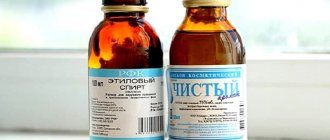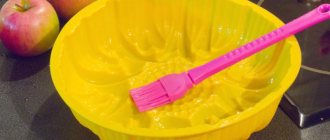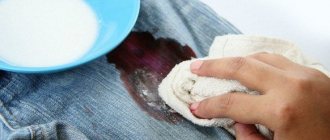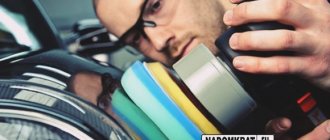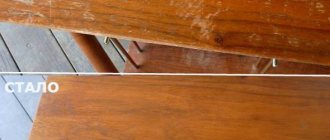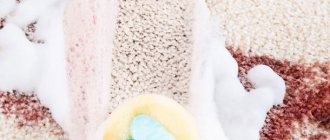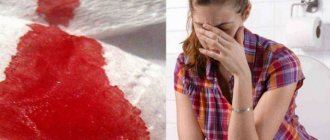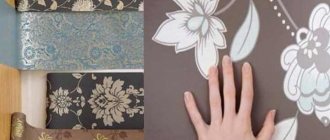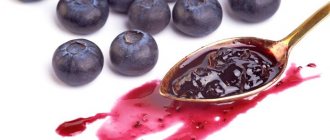Surely every housewife has encountered the problem of stains appearing on a plastic cutting board. Many of you know for sure that this kind of stain is not so easy to get rid of. Some leave everything as it is, while others simply dream of solving this problem. Today, dear housewives, I will tell you how to easily and easily remove stains from cutting boards.
How to saturate a bamboo cutting board?
For impregnation of the board
use Vaseline oil or food-grade beeswax, these can be found at the pharmacy.
Apply the lubricant to a dry board
and leave for several hours, then wipe off any excess.
There is no need to use sunflower or olive oil, as it can give the board
an unpleasant odor.
Interesting materials:
How long did it take to recover after a caesarean section? How long does it take for a parrot to get used to it? How long does it take for swelling to go away after implantation? How long does it take for eyebrow hair to grow? How long does it take for leaves to dry in a book? How long does it take to install filler? How long does it take to charge 1200 batteries? How long does it take for a finger to heal after surgery? How long does it take for a foot fracture to heal? How long does it take for erosion to heal after cauterization?
How to use hydrogen peroxide correctly
Regular 3% hydrogen peroxide will whiten stains on your cutting board.
- Place the cutting board in the sink.
- Spray hydrogen peroxide on the cutting board until it is damp.
- Allow the hydrogen peroxide to soak in for several hours or overnight. You should see that the stain has lightened significantly.
- Wash the cutting board with detergent and water and let it dry.
Why does this method work? Hydrogen peroxide is a natural bleach that brightens surfaces and kills bacteria.
Rules for clearing the board
- easy to use;
- durable;
- odors disappear more easily than from wood;
- various colors of products.
- plastic has a detrimental effect on the environment;
- the surface of the material may be slippery;
- no antibacterial coating.
Method No. 3. This method is not aimed at eliminating odors, but at removing stains, for example, from carrots. You need to take vegetable oil, a cotton swab and wipe off all unwanted dirt from the surface. After the procedure, wash the board with dishwashing detergent in the usual way.
How I found my ideal hair growth product
Hello dear! I want to share with you my solution to the sensitive problem of hair loss . The problems are very serious, at least for me. I would never have thought that this misfortune would touch me, especially at the age of 29 (read more...)
How to clean cutlery
- Prepare the solution. For a liter of hot water, add a tablespoon of soda and the same amount of salt, mix everything.
- Place aluminum foil on the bottom of an enamel pan. On top of it are cutlery.
- Pour the prepared solution into a saucepan with utensils and put on fire.
- Boil for 5-10 minutes.
- Next, stainless steel spoons and forks are washed with regular dish soap and a sponge. In the area of the drawings, you can use a coarse brush with polymer bristles.
For kitchen boards made of plastic, certain characteristics can also be distinguished.
Best Ways to Clean and Sanitize Plastic Cutting Boards (No Bleach)
The debate about wooden versus plastic cutting boards is almost eternal. But there is one thing all parties can definitely agree on. A clean cutting board is really important.
Plastic cutting boards, while incredibly convenient and easy to clean (they're dishwasher safe, unlike wood or even bamboo), can harbor bacteria in those knife-cut grooves that degrade the surface over time. Bleach can kill a lot of these bacteria, but not everyone wants to introduce this chemical into their household. Not to mention putting bleach on food preparation surfaces.
Removing odors from plastic boards
Plastic products absorb unpleasant odors less, but over time they also require serious manipulation. There are several ways to clean a plastic cutting board.
Method No. 1. For the first method you will need water (5 l.) and any bleach (5 tbsp.). Mix the components and place the board in the solution for 15 minutes. After the specified time, remove the product and rinse thoroughly.
Method No. 2. Mix soda and citric acid in a container, dilute the substances with water to a paste, and apply the resulting paste to the surface of the board. After 30 minutes, remove the mixture with hot water or soap solution.
Method No. 3. This method is not aimed at eliminating odors, but at removing stains, for example, from carrots. You need to take vegetable oil, a cotton swab and wipe off all unwanted dirt from the surface. After the procedure, wash the board with dishwashing detergent in the usual way.
To avoid having to resort to radical methods, you should create separate boards for different product groups.
This is not always convenient, but in this way you can preserve not only the integrity of the product, but also your health.
If damage and cracks appear on the boards, then you should not cut food on it, as pathogenic bacteria can multiply in these scratches. Do not neglect this advice, because there is a high risk of contracting E. coli or salmonella.
Features of plastic and wood
A cutting board undergoes many tests during its service life. Juice from vegetables and fruits leaves traces, and fish and meat produce an unpleasant odor. Sometimes even the best detergents can't handle it. So how do you clean a cutting board?
Expert opinion
Ekaterina Korneva, expert in the field of care, cleanliness and beauty
I will help you understand all the intricacies.
You need to not only know how to wash a plastic cutting board, but also how to remove foreign odors from its surface. However, many people make the mistake of wiping a washed cutting board dry with a kitchen towel, thereby transferring germs and bacteria onto the board. How to clean a cutting board made of wood and plastic If you have any questions, please contact me, I will be happy to answer!
Using a clear example, I show how to remove stains from a cutting board.
Surely every housewife has encountered the problem of stains appearing on a plastic cutting board. Many of you know for sure that this kind of stain is not so easy to get rid of. Some leave everything as it is, while others simply dream of solving this problem. Today, dear housewives, I will tell you how to easily and easily remove stains from cutting boards.
How to properly dry a wooden cutting board
If there are errors in care, bacteria multiply on surfaces and mold forms. This is connected not only with washing the cutting device, but also with what was done afterwards.
Here are a few aspects of how to dry boards at home quickly so that they do not lose their usefulness:
- After washing, be sure to wipe with a dry microfiber cloth.
- Keep the boards, if there are several of them, separately - so that they do not touch.
- Do not place it on its edge or on its side. This is fraught with deformation.
- If possible, place the accessory horizontally on the grill. This way it will be exposed to air from all sides and will quickly become dry without loss of quality.
How to disinfect a wooden device
In addition to cleaning and eliminating unpleasant odors, it is necessary to regularly disinfect utensils. This will guarantee the long service life of the item.
The simplest thing is to wipe it with vinegar or peroxide. To protect the surface from the penetration of bacteria, you can resort to the following means:
- Mineral oil. It is applied to the surface a couple of times at intervals of several hours. This condition must be met so that the first layer has time to absorb sufficiently.
- Mineral oil and beeswax. The ratio of the two components: 3 parts to 1.
Don't be afraid to go overboard with the coating. The tree will absorb exactly as much oil as necessary. It will also create a moisture-proof layer on the board, which will reduce the absorption of stains.
Features of wood and plastic
Of course, these materials have been at the top of popularity for decades, but they have both positive and negative sides.
Tree
The positive properties of this material are:
- Strength;
- Environmental friendliness;
- Low cost;
- Ease of use.
Important! The disadvantages can be called obvious, they are presented:
- Rapid wear and contamination;
- The ability to absorb vegetable and fruit juice by the material.
Plastic
This material has the following advantages:
- Lightness;
- Durability;
- Quick disappearance of odors;
- Color variety.
Important! The disadvantages are presented:
- Lack of environmental friendliness;
- Often slippery surface;
- Lack of antibacterial coating.
Disinfection
From time to time it is necessary to disinfect the cutting surface, and special attention should be paid to this process. If you are thinking about how to remove odors and food residues, weigh all the pros and cons of each method.
It is better to use regular soda, available to every housewife. To do this, dilute a teaspoon in 0.5 liters of hot water and stir thoroughly. It is enough to keep the board in the solution for 5-10 minutes, then wash it thoroughly and leave it to dry in an upright position. By the way, you can clean a plastic board in the same way, since soda is a universal cleaner for many surfaces.
In addition to alkali, hydrogen peroxide is also suitable for this purpose. To do this, two teaspoons are mixed with 0.5 liters of water, after which a board is placed in the resulting composition. This method helps get rid of odors and food residues.
Traditional methods
If you don’t have any detergents at hand, you can use methods that have helped our grandmothers out more than once.
One great way to remove dirt is lemon. Just half of this citrus is enough to clean a plastic or wooden board from food debris. Rub the surface with lemon, after which the cleaned item is thoroughly washed with water.
Another folk recipe can be a combination of citrus and salt. As in the previous case, the board is rubbed with lemon and then sprinkled with salt. After 10-12 minutes, the surface is again rubbed with half a citrus fruit, and then washed with water.
If you need to remove the smell of herring or meat from the board, vinegar will do the job perfectly - you can wipe the cutting surface with it.
If you notice that the board has cracks or scratches, get rid of it as soon as possible. Even if you really like this thing, remember that if it is deeply damaged, it is no longer suitable for use.
How often do you wipe your cutting board dry after work? Not always, but in vain. This is why black spots of mold form on it. Getting rid of them is not so easy. Boards are made from a variety of materials, but wood and plastic remain the most popular. Does everyone know how to clean a cutting board? We’ll talk about this so that you don’t have any doubts about whether you’re doing everything right or missing something.
How to remove odor
Despite its ease of use, wood has one rather significant drawback - it actively absorbs foreign odors. And if at first this is not always noticeable, then over time it can cause discomfort when cooking. The most important rule is regular processing.
There are several remedies that can help cope with the problem:
- Vinegar. It is used to wipe the surface immediately after cutting food. This method works well with the aromas of fish, raw meat, garlic and onions. An alternative to vinegar is a slice of lemon.
- Coffee, tea leaves, mustard powder or charcoal. Anyone can rub the wood, and the unpleasant amber will disappear.
- Saline solution. You can resort to this method if you are not afraid of deformation of the wood. In this case, four tablespoons of salt must be dissolved in a liter of hot water.
Here's how to clean plastic cutting boards without using bleach.
1. If possible, place cutting boards in the dishwasher.
One of the benefits of non-porous plastic is that you can put your plastic cutting boards in the dishwasher. And you definitely should. The hot cycle of your dishwasher is one of the best ways to sanitize your cutting board.
2. When you need to hand wash your boards, use hot soapy water and a brush.
The rag or sponge will not get caught in the knife grooves that are present on any plastic cutting board you use. Therefore, use a brush to remove any food particles and bacteria.
3. Use an alternative disinfectant solution.
To manually sanitize without using bleach, after you've washed your cutting board, try soaking it in a white vinegar solution or spraying it with a 3% hydrogen peroxide solution. Leave on for 5 minutes before washing again with soap and water.
4. Clean out stains.
If necessary, make a paste of one part baking soda, one part salt and one part water.
Key points:
- Different types of food require different cutting boards. This way you can avoid food poisoning when preparing meat products and you won’t have to constantly wash the same board when cooking.
- Hot water and dish soap are essential for daily cleaning of cutting boards.
- Once a week, thoroughly disinfect all cutting boards.
We suggest you read: Why you can’t carry a refrigerator lying down Tips:
- Some food odors, such as garlic, onions and fish, are difficult to avoid. Dip a paper towel into pure lemon juice or take a lemon wedge and rub the surface - your cutting boards will smell citrusy fresh!
- Rub the board with coarse salt or baking soda to remove strong odors. Leave the substance on the board for 2 - 3 minutes, then wipe the treated surface. Rinse cutting board and dry.
- Bacteria die without moisture. Store the board in a dry place away from food and any other contaminants. Store your board upright when not in use.
How to clean the board from dirt?
To wash street dirt from a wooden surface, you need to arm yourself with a rag, a brush and any detergent. Dishwashing gel, washing powder, and laundry soap are suitable. Having prepared a soap solution, apply it to the surface of the floorboards, rub with a brush and rinse with clean water.
Interesting materials:
How to find out your factory phone number? How to find out Vodafone tariff by phone number? How can I find out the Kyivstar tariff plan of another number? How can I find out the tracking number if I lost it? How to find out the track number of a sent parcel? How to find out your phone number in Tele2? How to find out the owner of a1 number? How to find out blocked numbers on WhatsApp? How to correct a personnel number in 1C? How to paste a copied number on an iPhone?
How to wash a wooden board?
Fill the top of the board with hydrogen peroxide. Then, using a clean sponge, spread the liquid evenly on the top, bottom and sides. Leave the hydrogen peroxide on for 5-10 minutes, then rinse the board under water and blot dry with a clean sponge.
Interesting materials:
How long do small street snails live? How long do bullfinch live? How many gold rings can you wear? How many zones are there in basketball? What is the biological meaning of asexual reproduction? What has the most copper? Where are male gametes produced? What should you wear to plunge into the ice hole at Epiphany? What are the dangers of gas boilers? What are the advantages of an open relationship?
Method 3
- It is better to have a separate board for all products. Disinfection is required, after which the equipment is thoroughly washed and dried.
- For cleaning, it is better to use one product, and it is better to choose the least toxic one. How to clean blackness from a plastic cutting board? It is better to use a mixture of water and vinegar rather than harsh chemicals. This composition will help cope with mold, bacteria and even viruses.
- In the kitchen you should have a spray bottle with a mixture of water (2 tbsp.) and tea tree essential oil (2 tsp.). It will help destroy mold.
In this case, it is important not only to fight off the fishy smell, but also to take care of disinfection. To do this, you can use lemon and rub one half of the fruit on the surface of the product, sprinkle salt on top and leave for 15 minutes. After the specified time, you should wipe the board again with lemon and wash it in warm water.
How to clean black plastic cutting boards
Cutting boards are needed in every kitchen. We cut all products on them, from vegetables to hard cheeses. We don't always have a separate board for each food group, and fruits and raw meats may be cut on the same board. And although the board is washed after each use, the result is not flawless. Regular soap and detergent are not as effective as they should be. After a few years of use, the board almost completely fails. But don’t rush to throw it away until you try original cleaning methods.
1. Salt and lemon
This method works very well for cleaning wooden cutting boards. Scatter coarse salt on the board, and then begin to rub it with half a lemon, squeezing the fruit so that the juice begins to stand out. Rub until a gray liquid forms on the board. After the salt has dissolved, simply rinse off the remaining mixture with water and wipe the surface dry.
2. Lemon juice
If you don't have fresh lemon on hand, you can change the salt recipe by simply adding lemon juice from a bottle. Wipe the board with the slurry using a hard sponge. If the dirt is very strong, leave the mixture of salt and juice for a couple of hours. In this case, you need to make the mixture thick enough, and there should be more salt in it.
3. Vinegar
Vinegar is great for getting rid of stains. You can use it pure or dilute it with water in a 1:1 ratio. Vinegar not only cleans the board, but also kills bacteria. Pour the solution into a spray bottle and add to the board each time you use it. Then wipe with hydrogen peroxide, and after that simply rinse the surface with running water.
4. Bleach
Bleach is the best cleaning solution for plastic boards. Fill the sink with hot water and add half a cup of liquid bleach or bleach. Leave the board in the sink for 20-30 minutes and then rinse thoroughly with soapy water to remove any traces of chemicals.
5. Baking soda
If your board starts to smell bad, try getting rid of the smell with a paste of water and baking soda. Make a thick paste on the board and leave it for a while. Rinse off the baking soda and dry the board with a towel. The unpleasant odor should disappear.
6. Vaseline
Wooden boards should not be left in water for a long time, as this will cause them to become covered with unsightly stains. And although they do not interfere with the use of the board, it will no longer be possible to display it in a prominent place. Simply rub the stain on the board with Vaseline and leave for 12 hours. Once the Vaseline is absorbed, wipe off any remaining residue and wash the board. The stains should disappear.
7. Toothpaste
If the board has become rough over time, you can polish it with a mixture of baking soda and toothpaste. Just choose a white paste, not a gel. Wipe the surface along the grain of the wood. Then wipe the board with a damp cloth and dry.
8. Grated apples or potatoes
Another effective way to eliminate unpleasant odor is to cover the board with grated apple or potato gruel. Leave the paste for 10-15 minutes and then simply rinse with water. The smell will be much better.
9. Microwave
Small boards can be disinfected in the microwave. The method is not suitable for thin plastic. Do not leave the board in the oven for more than one minute. You can pre-wipe the board with soapy water and lemon.
10. Laundry soap
Be sure to lather the board with thick foam after cutting raw meat on it. It is better to immediately apply foam, and only then wash off traces of blood with water. Wipe down the board immediately after cutting to prevent stains from penetrating deep into the wood grain.
11. Steel sponge
In the most advanced cases, you will have to resort to mechanical cleaning. The steel wool actually removes a thin layer of wood, removing the stain. You shouldn’t resort to this method too often, but with some stains you can’t do without it.
12. White spirit
If the stain is too stubborn, soak a steel wool pad in a solution of white spirit and scrub thoroughly. After this, you need to thoroughly wash off the chemical with soapy water. Dry the board in the open air so that the fumes completely evaporate.
13. Vegetable oil
Another way to polish scratched boards. Mix 3/4 part oil with 1/4 part vinegar and polish the board. It should become smooth.
Any of these tips will make cleaning your kitchen much easier. Try everything and choose the best one!


